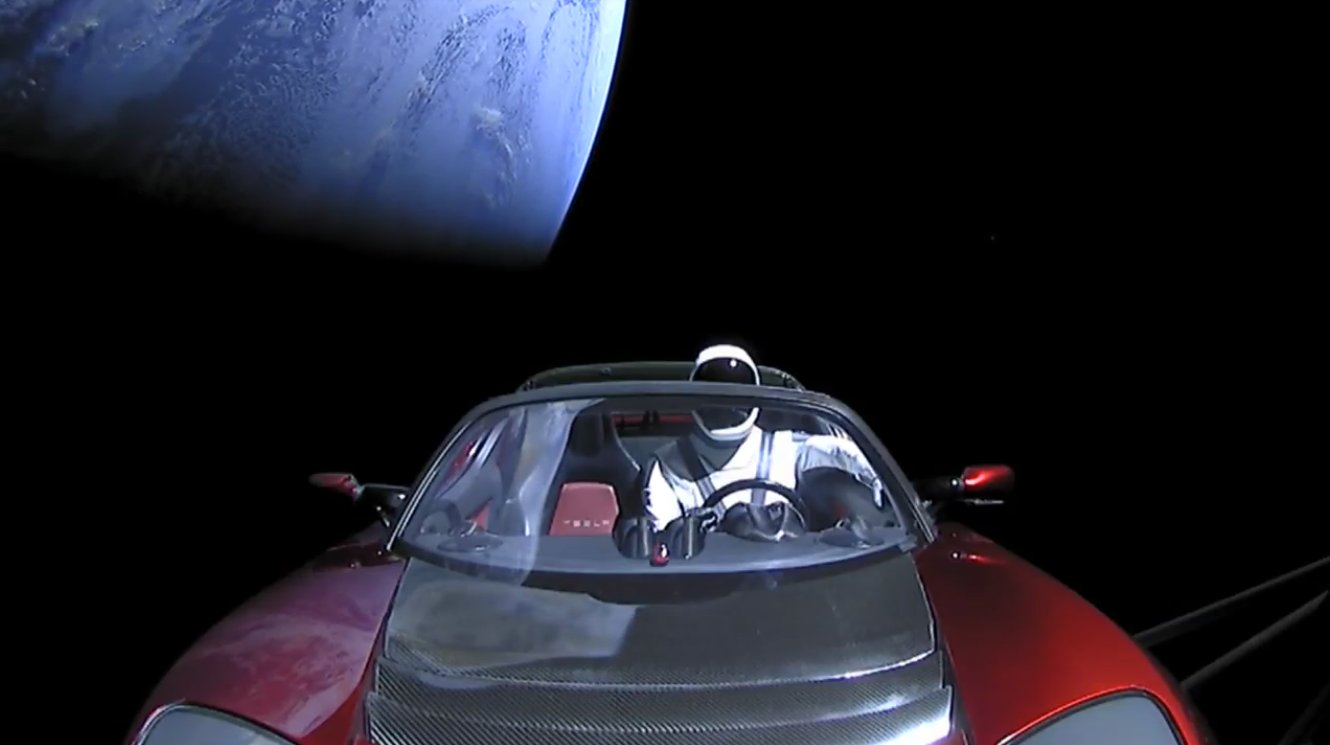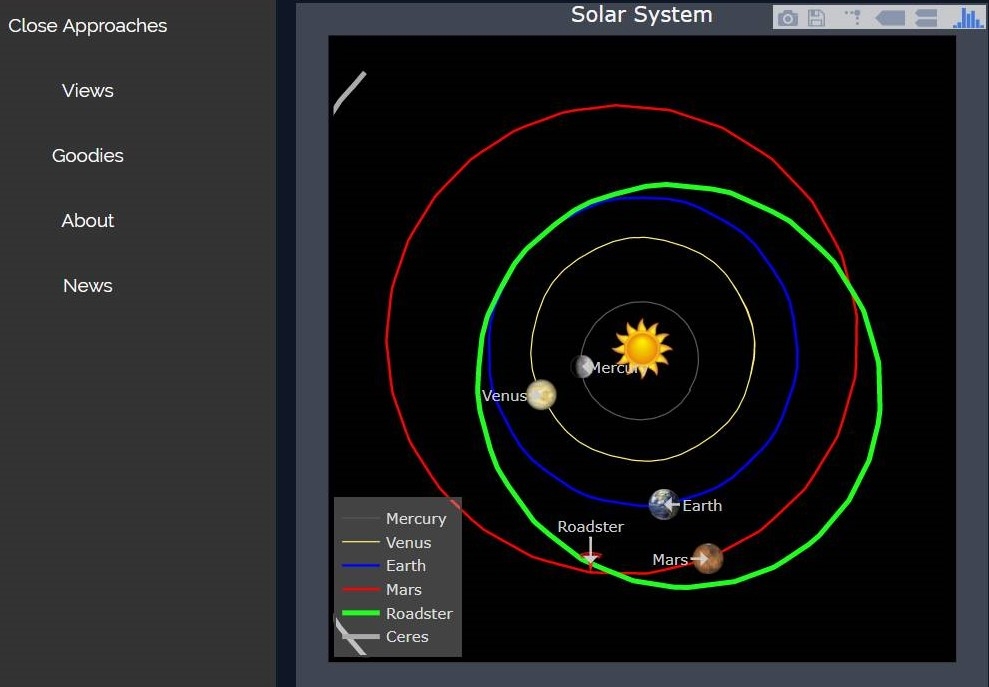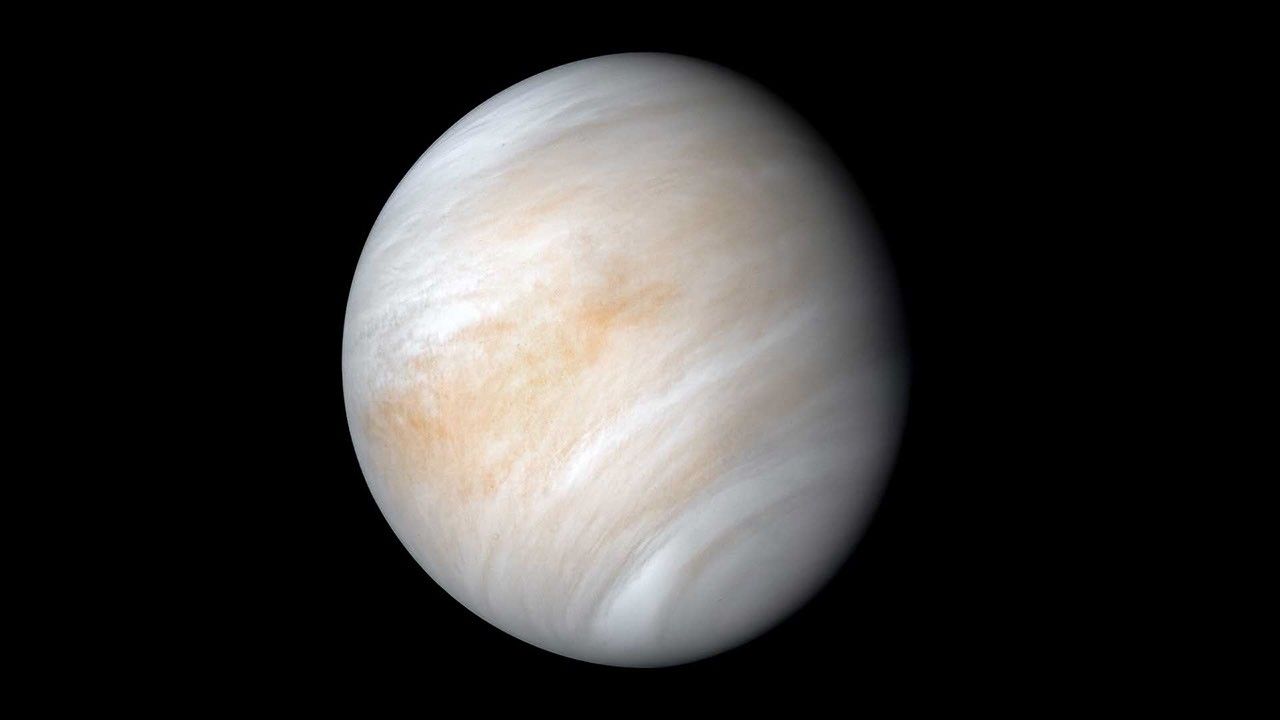
Tesla in Space: Track Cosmic Journey of Elon Musk's Roadster and Starman Passenger

Where is Elon Musk's Tesla Roadster and its dummy "driver," Starman?
The Roadster, which launched on the maiden flight of SpaceX's huge Falcon Heavy rocket on Feb. 6, surely has a window full of speeding tickets by now. And it's apparently tumbling, but in cruise control, outward bound from Earth.
Thanks to a website set up by Ben Pearson, founder of Old Ham Media, you can keep up with the speeding Tesla in space. [In Photos: SpaceX's 1st Falcon Heavy Rocket Test Launch Success!]
"I came to realize that people really were interested in the tracking of these objects," Pearson wrote on the site, whereisroadster.com. "I started thinking about how I could manage to get this information, and then I came to realize that I could provide the tracking for it myself!"
Tracking a space car
Pearson registered the domain whereisroadster.com and began assembling the best tracking data available. The information he's currently using comes from the Horizons website run by NASA's Jet Propulsion Laboratory in Pasadena, California, which allows him to track the Tesla Roadster "to the best of human understanding, for some time to come."
This information will eventually expire, however, Pearson pointed out.
"I'm not sure exactly when that will be, but I suspect in a few years," he wote. "Certainly, it will be difficult to see when it next comes close to the Earth, which won't be for a long time."
Breaking space news, the latest updates on rocket launches, skywatching events and more!
And, by the way, Pearson said he doesn't own a Tesla — "but I am in the reservation queue for a Tesla Model 3."
Where is the Roadster now?
The Tesla travelogue has the car's location, as of Wednesday afternoon (Feb. 21), at about 2.8 million miles (4.5 million kilometers, or 0.030 astronomical units) from Earth, moving away from Earth at 7,532 mph (12,122 km/h). (One astronomical unit, or AU, is the average Earth-sun distance — about 93 million miles, or 150 million km.)
At present, the Roadster is about 134.3 million miles (216.1 million km, or 1.445 AU) from Mars, moving toward the planet at 43,053 mph (69,287 km/h).

Milestones
Circle the calendar for these events, which Pearson has flagged on his website:
— Close approach to Mars, on June 8, 2018, at a distance of 0.740 AU.
— Most distant point from the sun, on Oct. 10, 2018, at a distance of 1.655 AU.
— Far point from Earth, on Feb. 21, 2019, at a distance of 2.446 AU.
— Close approach to the sun, on Aug. 9, 2019, at a distance of 0.983 AU.
— Close approach to Mars, on Sept. 16, 2019, at a distance of 0.649 AU.
— Far point from Earth, on Jan. 15, 2020, at a distance of 2.336 AU.
— Far point from the sun, on April 20, 2020, at a distance of 1.656 AU.
— Close approach to Mars, on Oct. 6, 2020, at a distance of 0.049 AU.
Leonard David is author of "Mars: Our Future on the Red Planet," published by National Geographic. The book is a companion to the National Geographic Channel series "Mars." A longtime writer for Space.com, David has been reporting on the space industry for more than five decades. Follow us @Spacedotcom, Facebook or Google+. This version of this story was posted on Space.com.
Join our Space Forums to keep talking space on the latest missions, night sky and more! And if you have a news tip, correction or comment, let us know at: community@space.com.

Leonard David is an award-winning space journalist who has been reporting on space activities for more than 50 years. Currently writing as Space.com's Space Insider Columnist among his other projects, Leonard has authored numerous books on space exploration, Mars missions and more, with his latest being "Moon Rush: The New Space Race" published in 2019 by National Geographic. He also wrote "Mars: Our Future on the Red Planet" released in 2016 by National Geographic. Leonard has served as a correspondent for SpaceNews, Scientific American and Aerospace America for the AIAA. He has received many awards, including the first Ordway Award for Sustained Excellence in Spaceflight History in 2015 at the AAS Wernher von Braun Memorial Symposium. You can find out Leonard's latest project at his website and on Twitter.
